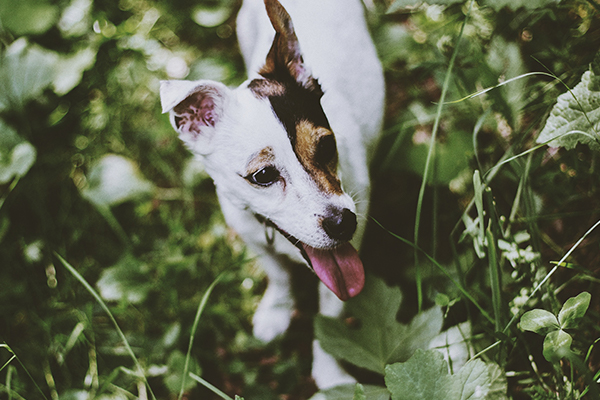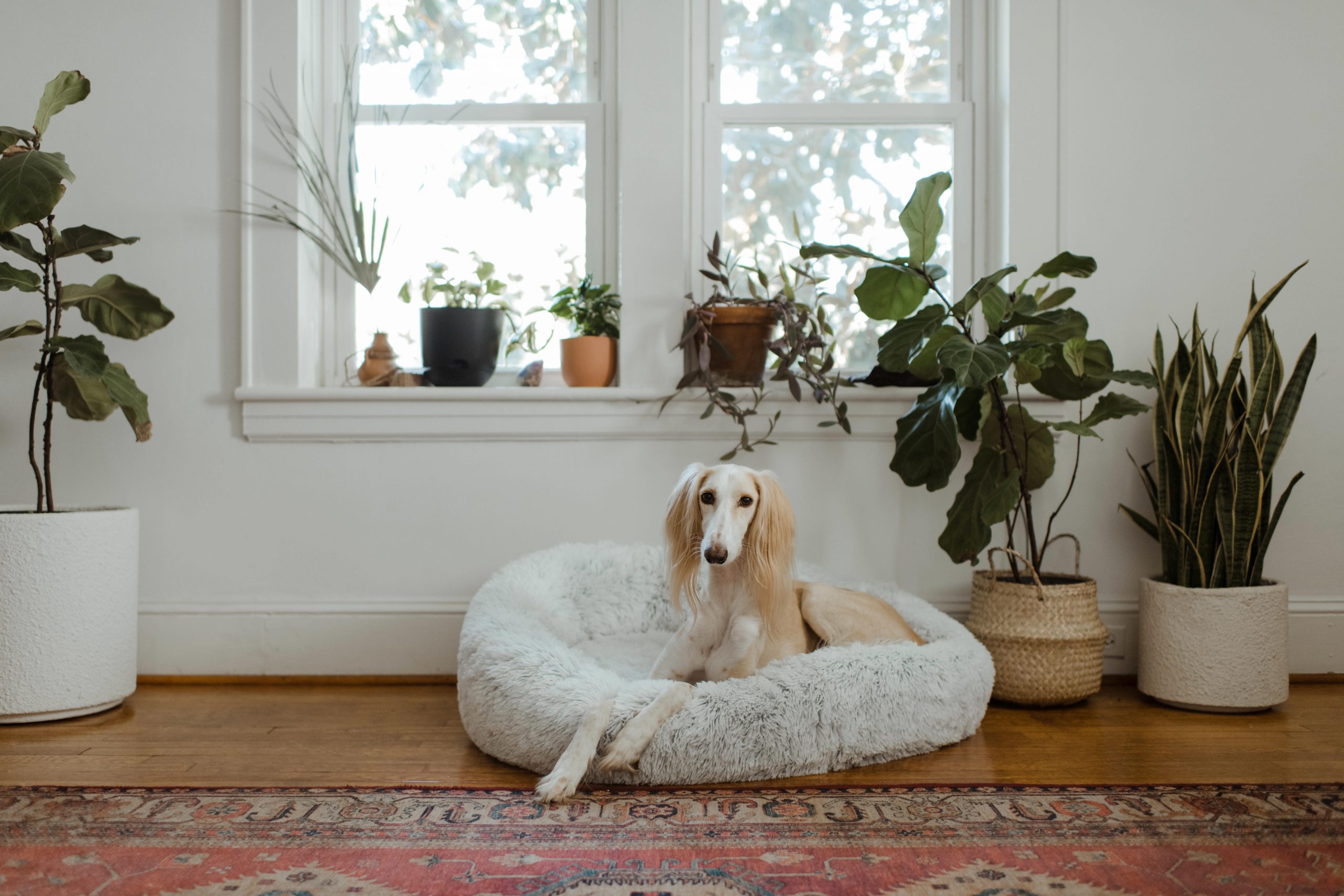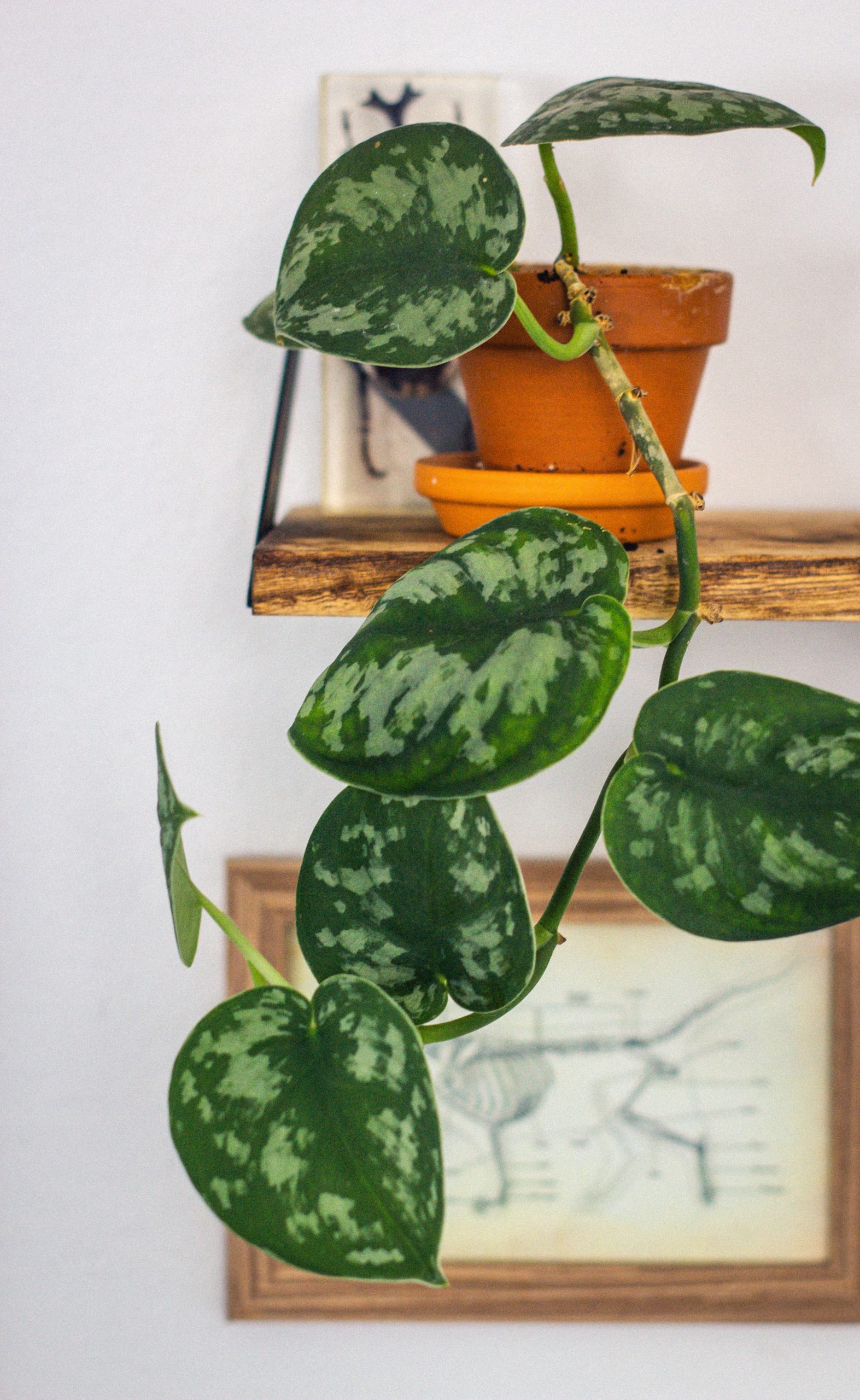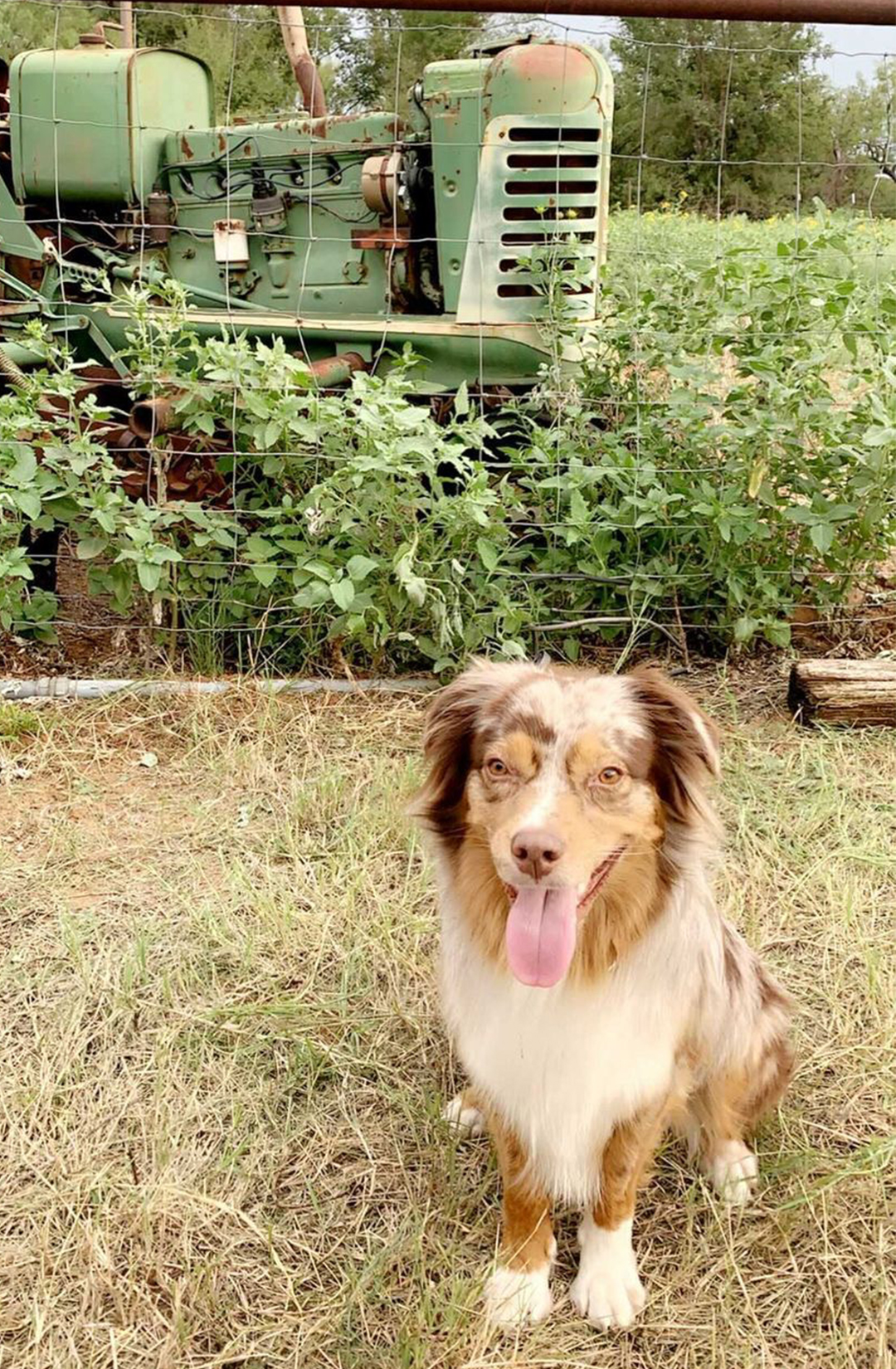
Plants have an innate ability to cheer us up and lift our spirits. They add color, texture, and beauty to our indoor and outdoor spaces and they help provide fresh oxygen to our environment. They also take us back to nature where we often feel most at home. We rely on plants and plants rely on us. It’s a symbiotic relationship that has many benefits for all involved.
However, sometimes the plants we love are not so good for our canine companions who often devour anything and everything they can get their mouth on. Dogs are well known to investigate anything they come across, and this is where we, as pet parents, need to be vigilant and knowledgeable about which plants are ok to bring into our yard and home. Many plants are not safe for our dogs, and when a poisonous plant is eaten by man’s best friend, there can be complications. If you suspect your pooch has munched on or eaten a poisonous plant mentioned below, you should consult with your veterinarian immediately or call the ASPCA Animal Poison Control 24/7 hotline at 1-888-426-4435
Below are, arguably, the 20 Most Common Poisonous Plants for pet parents to watch out for when choosing plants and flowers to bring home for decoration or landscaping purposes.
Tulips – As one of the most popular plants for springtime planting and as indoor floral decorations, tulips can, unfortunately, cause problems for curious pooches. Both the flower and stem are toxic and the bulbs are even worse. Signs of ingestion can include diarrhea, vomiting, over salivating, and mood swings. Tulips are beautiful and a sure sign that spring has sprung, but it’s better to error on the side of caution if there is a dog on the property.
Azaleas (rhododendron) – Not only are azaleas hard to grow since they require very demanding growing conditions and soil amendments, but they are also poisonous to canines. Their beautiful, vibrant colored flowers can be attractive to dogs, and when ingested can cause vomiting, diarrhea, hypersalivation, cardio issues, vision problems, and possible death. Every part of the azalea plant is toxic to dogs, including the flowers, leaves, seeds, and nectar.
Elephant’s Ear – At home in both landscape settings and indoors, elephant ears are beautiful, large green plants that add beauty to the scene. However, they contain insoluble calcium oxalate crystals that can be similar to sharp glass when ingested and cause internal and external irritation to canines. If your dog is exposed, it’s good to dilute or flush the exposed area with water.
Snake Plants – Very popular in homes throughout the world, snake plants are very hardy and difficult to kill – which makes them popular choices for those without green thumbs. But, they are poisonous for dogs and cause nausea, vomiting, diarrhea, and in some cases lethargy. It’s not extremely toxic, but it is troublesome enough to avoid this plant being near dogs.

Oleander – With its habit of growing to great heights and displaying white or pink flowers, it is often used in landscaping as a hedge or barrier between houses or spaces. It is quite a formidable plant and provides both beauty and privacy. But, it is poisonous to dogs. If ingested by man’s best friend, it can cause vomiting, abdominal pain, over salivation, diarrhea, lethargy, liver failure, or even death. It can also cause heart issues. Medicine typically has to be given to induce vomiting and address any liver or heart issues.
Morning Glory – An attractive vine plant with flowers that open in the morning, it’s a popular plant found in many landscapes. It’s appealing to both humans and animals, and therein lies the issue. Some dogs tend to eat the good-looking flowers when they open in the morning and they can cause vomiting, diarrhea, nausea, confusion, dilation of the pupils, and even liver failure. Morning glories are beautiful but harmful to dogs, so it’s better to leave them off the landscape menu altogether.
Aloe Vera – The “healer” of the plant world is a great plant to have on hand for soothing and healing burns and other ailments since it features many medicinal qualities. Households grow aloe vera inside and outside to have on hand in case of an emergency. But, its gooey gel is toxic when consumed by dogs. Usual signs of ingestion are lethargy, vomiting, upset stomach, and diarrhea. It’s not the worst plant if consumed by your pooch, but it can cause some issues.
Milkweed – A favorite of monarch butterflies and gardeners that wish to attract the resident or migrating monarchs, however, it’s not a good plant for man’s best friend to get a hold of. Some milkweed plants contain cardiotoxins which can harm a dog’s heart, while other species contain neurotoxins that can affect certain organs and the brain. Be sure to keep this plant in an out-of-the-way place where dogs don’t have easy access.
 Golden Pothos – Also known as "Devils Ivy," Golden Pothos is a favorite among indoor plants and can also be found growing on the outside of buildings. While it looks harmless and is easy to grow and maintain indoors, like elephant’s ear, it contains insoluble calcium oxalates which cause severe irritation to the mouth and skin when consumed. Symptoms like oral itching and intense burning pain in the mouth region can turn into vomiting, difficulty swallowing, or abundant drooling.
Golden Pothos – Also known as "Devils Ivy," Golden Pothos is a favorite among indoor plants and can also be found growing on the outside of buildings. While it looks harmless and is easy to grow and maintain indoors, like elephant’s ear, it contains insoluble calcium oxalates which cause severe irritation to the mouth and skin when consumed. Symptoms like oral itching and intense burning pain in the mouth region can turn into vomiting, difficulty swallowing, or abundant drooling.
Sago Palm – Although sago palms make very attractive indoor decorative additions if you have a dog it is a big No-No as a house plant. A toxin called cycasin is present everywhere within the palm and even a single seed can cause death to a dog. Typically, the symptoms range from severe vomiting, diarrhea, and pain in the abdomen, but can also include seizures, tremors, and stumbling. Sago palms may look beautiful, but if you have a dog, just leave the plant at the store.
Dumb Cane (Dieffenbachia) – A sturdy, tropical, indoor plant that thrives in low light conditions, this is a great plant with which to decorate if there are no pets in the house. Like golden pathos and elephant’s ear plants, calcium oxalate crystals are again the toxic element present in Dumb Cane. The same symptoms as described above with golden pathos and elephant’s ears apply to Dumb Cane as well, including swelling in the mouth or throat region, vomiting, oral pain, skin irritation, and coughing.
Philodendrons – Available in many shapes and sizes from stout plants to vining varieties, philodendrons are another popular tropical choice for interior decorating because they look nice, have heart-shaped leaves, are hardy, and easy to take care of. However, they are toxic to our canine companions because they contain insoluble calcium oxalate crystals and can cause oral irritation, mouth swelling, difficulty breathing, and skin irritation like other tropical vining plants.
Lily of the Valley – Producing delicate white flowers, the lily of the valley is a popular indoor and outdoor plant, but it shouldn’t be included in landscaping or interior decorating plans if a pooch resides in the home. It is highly poisonous and can bring about an irregular heartbeat, disorientation, vomiting, confusion, and similar symptoms that can lead to trouble for dogs.
Yew – As an evergreen bush/ tree that contains red berry-like fruits, it makes an attractive addition to landscapes. The wood of a yew tree has been used for cabinet making and the production of longbows in the past. Unfortunately, most of the yew tree or bush is highly toxic and can produce trembling, muscle weakness, breathing difficulties, and even sudden death if ingested by our furry friends. It can cause so many problems that dogs have to be given activated charcoal, flushing, or even an enema along with IV and therapeutic aids to correct the poisoning effects.
English Ivy – English ivy is an evergreen perennial that makes a great ground cover, building crawler, or houseplant. It is very hardy and attractive, but somewhat toxic to dogs. Symptoms are the same as other ivy variety plants where insoluble calcium oxalate crystals can cause mouth pain, swelling in the mouth or throat region, vomiting, oral pain, skin irritation, and coughing.

Marijuana – With the popularity of this hallucinogenic as more states make it legal to possess and consume, more dogs are coming into contact with it. While it is ok for humans to consume marijuana, it doesn’t sit well with canines. Even small quantities of marijuana can cause trembling, lethargy, anxiety, and problems going to the bathroom. In larger quantities or if it is eaten as a marijuana-chocolate mix in the case of ingestible pot, the toxic effect is so severe that intervention needs to occur immediately.
Cyclamen – A perennial that sports bright pink blooms in about every shade, cyclamens are a popular indoor houseplant that is hardy and lives a long time. But, if your canine eats any part of the plant, it can cause drooling, vomiting and diarrhea. If they dig up the plant and eat its roots, it can cause heart arrhythmia and even death in severe cases.

Mistletoe – We’ve all seen mistletoe in movies and at parties hanging above doorways or high up in trees in the winter when all the leaves
have fallen. It seems harmless enough, but it contains polysaccharides, alkaloids, and lectins that can result in mild stomach irritation, vomiting, diarrhea, and abdominal pain in dogs, so it is better to keep mistletoe closer to lovers and a further distance from man’s best friend.
Amaryllis – Amaryllis flowers are big, beautiful, and come in numerous colors. They make a great flowering plant for both landscapes and indoor settings, but they contain Lycorine and other toxic chemicals that can create gastrointestinal issues and lethargy when consumed by dogs. As with most bulb-grown plants, the bulb or root area is reported to be even more toxic.
Chrysanthemum – Also called mums, these flowers are native to East Asia and Eastern Europe with the most varieties found in China. They make impressive additions to landscapes, but like the nineteen plants above, are also toxic to pets, including dogs. They can cause vomiting, diarrhea, over salivation, and skin issues when ingested.
We hope this list will help with identifying some of the most common toxic plants for dogs. Plants are great for our environment, mood, decoration, and spirit, but with a little planning and preparedness, we can enjoy wonderful plants along with our canine companions while keeping everyone safe. If ever you cannot keep a close eye on your pet around the plants in your home, a gate or crate can be used to make a safe place for your dog.
In addition to the plants listed here, there are many more poisonous plants to be aware of. While the plants listed above are some of the most common, the ASPCA offers a full list of poisonous plants, please follow this link for more information: https://www.aspca.org/pet-care/animal-poison-control/dogs-plant-list
 50 Fruits and Vegetables Dogs Can and Can’t Eat
50 Fruits and Vegetables Dogs Can and Can’t Eat
05.28.2021
 10 Signs a Dog is in Pain
10 Signs a Dog is in Pain
04.30.2021
Dogs feel pain just like we do, and for many of the same reasons, but the signs they display can be a fair bit different than how we show pain ... >>> READ MORE
 Homemade Dog Food & Treats - Pros and Cons
Homemade Dog Food & Treats - Pros and Cons
03.03.2021
Commercial dog food is once again making the news. Unfortunately, the headlines point to a recall of dog food that contains lethal concentrations of aflatoxins , ... >>> READ MORE
 Housetraining 101: How to Potty Train a Puppy
Housetraining 101: How to Potty Train a Puppy
02.01.2021
Congratulations! If you are reading this blog article then you are likely a proud pet parent of a new puppy or you know someone who is. Housetraining, aka potty training, is the cornerstone to a happy and rewarding bond between a dog and its owner. >>> READ MORE
Please complete this form and click "Submit". Our Customer Support team will gladly address your request and respond in a timely manner.
Richell USA, Inc.
Copyright © Richell, Inc.. All rights reserved